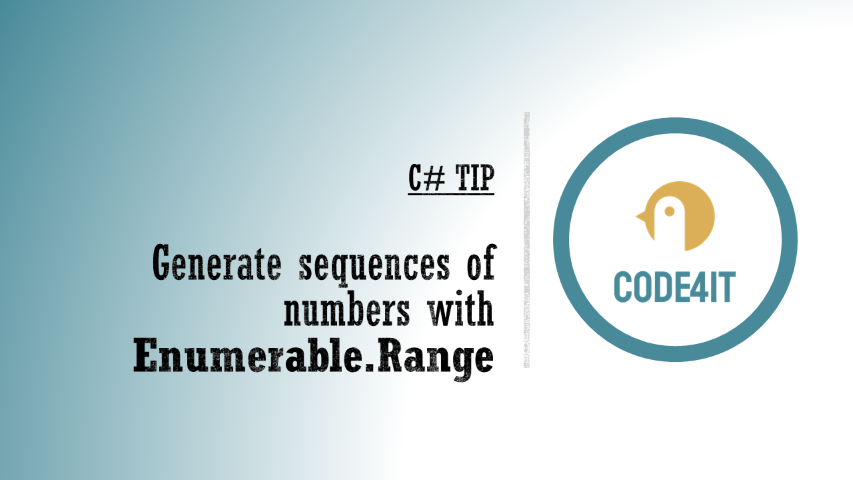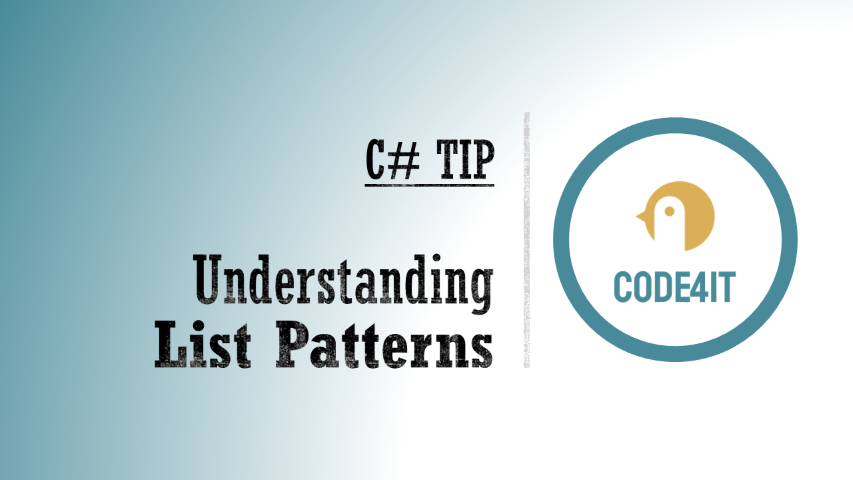Just a second! 🫷
If you are here, it means that you are a software developer.
So, you know that storage, networking, and domain management have a cost .If you want to support this blog, please ensure that you have disabled the adblocker for this site.
I configured Google AdSense to show as few ADS as possible – I don’t want to bother you with lots of ads, but I still need to add some to pay for the resources for my site.Thank you for your understanding.
– Davide
When you need to generate a sequence of numbers in ascending order, you can just use a while loop with an enumerator, or you can use Enumerable.Range.
This method, which you can find in the System.Linq namespace, allows you to generate a sequence of numbers by passing two parameters: the start number and the total numbers to add.
Enumerable.Range(start:10, count:4) // [10, 11, 12, 13]
⚠ Notice that the second parameter is not the last number of the sequence. Rather, it’s the length of the returned collection.
Clearly, it also works if the start parameter is negative:
Enumerable.Range(start:-6, count:3) // [-6, -5, -4]
But it will not work if the count parameter is negative: in fact, it will throw an ArgumentOutOfRangeException:
Enumerable.Range(start:1, count:-23) // Throws ArgumentOutOfRangeException
// with message "Specified argument was out of the range of valid values"(Parameter 'count')
⚠ Beware of overflows: it’s not a circular array, so if you pass the int.MaxValue value while building the collection you will get another ArgumentOutOfRangeException.
Enumerable.Range(start:Int32.MaxValue, count:2) // Throws ArgumentOutOfRangeException
💡 Smart tip: you can use Enumerable.Range to generate collections of other types! Just use LINQ’s Select method in conjunction with Enumerable.Range:
Enumerable.Range(start:0, count:5)
.Select(_ => "hey!"); // ["hey!", "hey!", "hey!", "hey!", "hey!"]
Notice that this pattern is not very efficient: you first have to build a collection with N integers to then generate a collection of N strings. If you care about performance, go with a simple while loop – if you need a quick and dirty solution, this other approach works just fine.
Further readings
There are lots of ways to achieve a similar result: another interesting one is by using the yield return statement:
🔗 C# Tip: use yield return to return one item at a time | Code4IT
This article first appeared on Code4IT 🐧
Wrapping up
In this C# tip, we learned how to generate collections of numbers using LINQ.
This is an incredibly useful LINQ method, but you have to remember that the second parameter does not indicate the last value of the collection, rather it’s the length of the collection itself.
I hope you enjoyed this article! Let’s keep in touch on Twitter or on LinkedIn, if you want! 🤜🤛
Happy coding!
🐧

